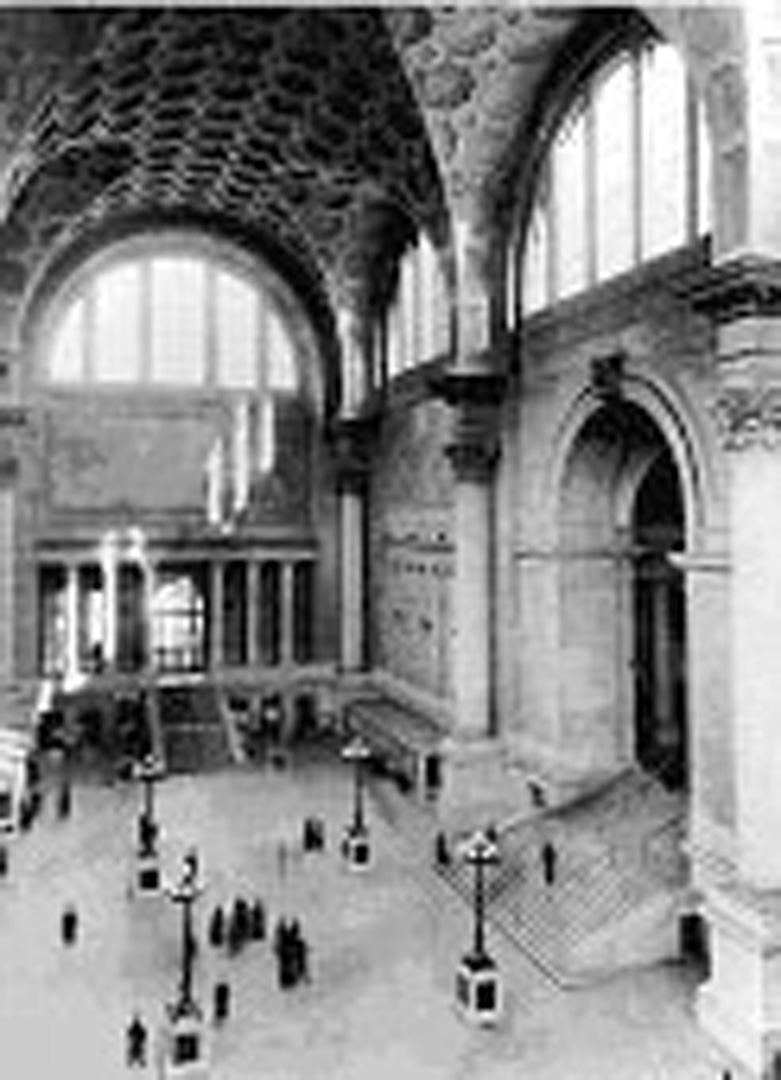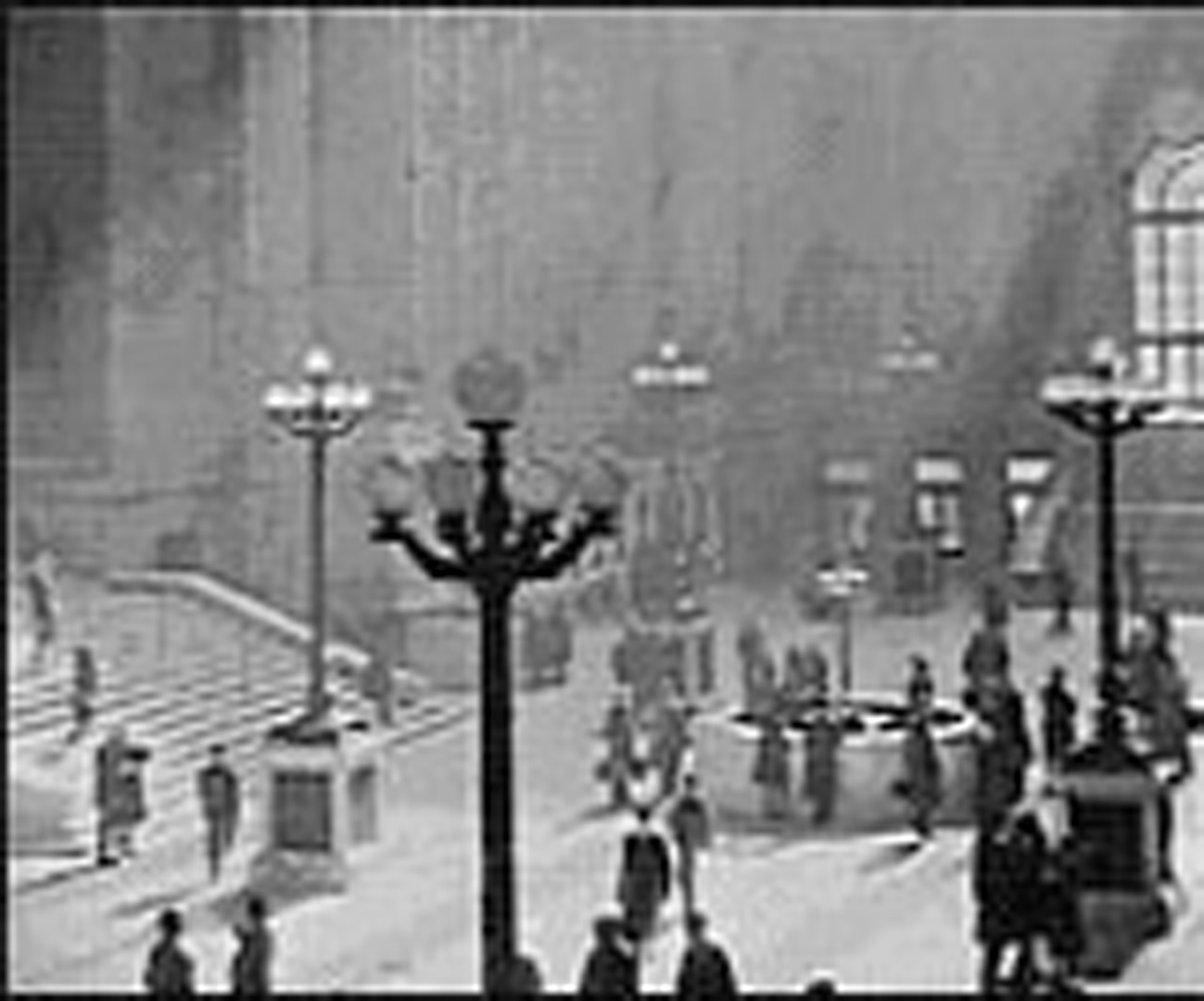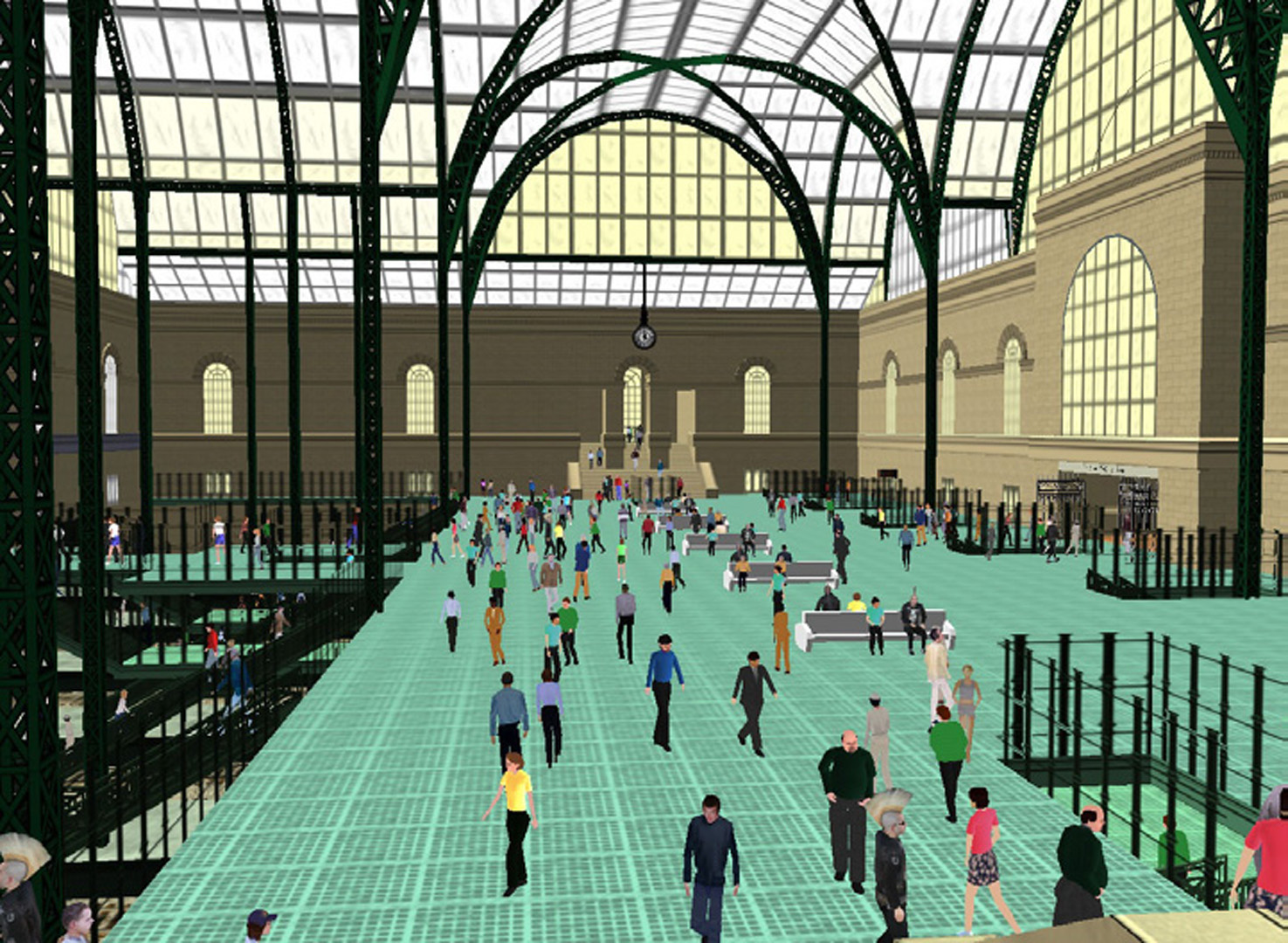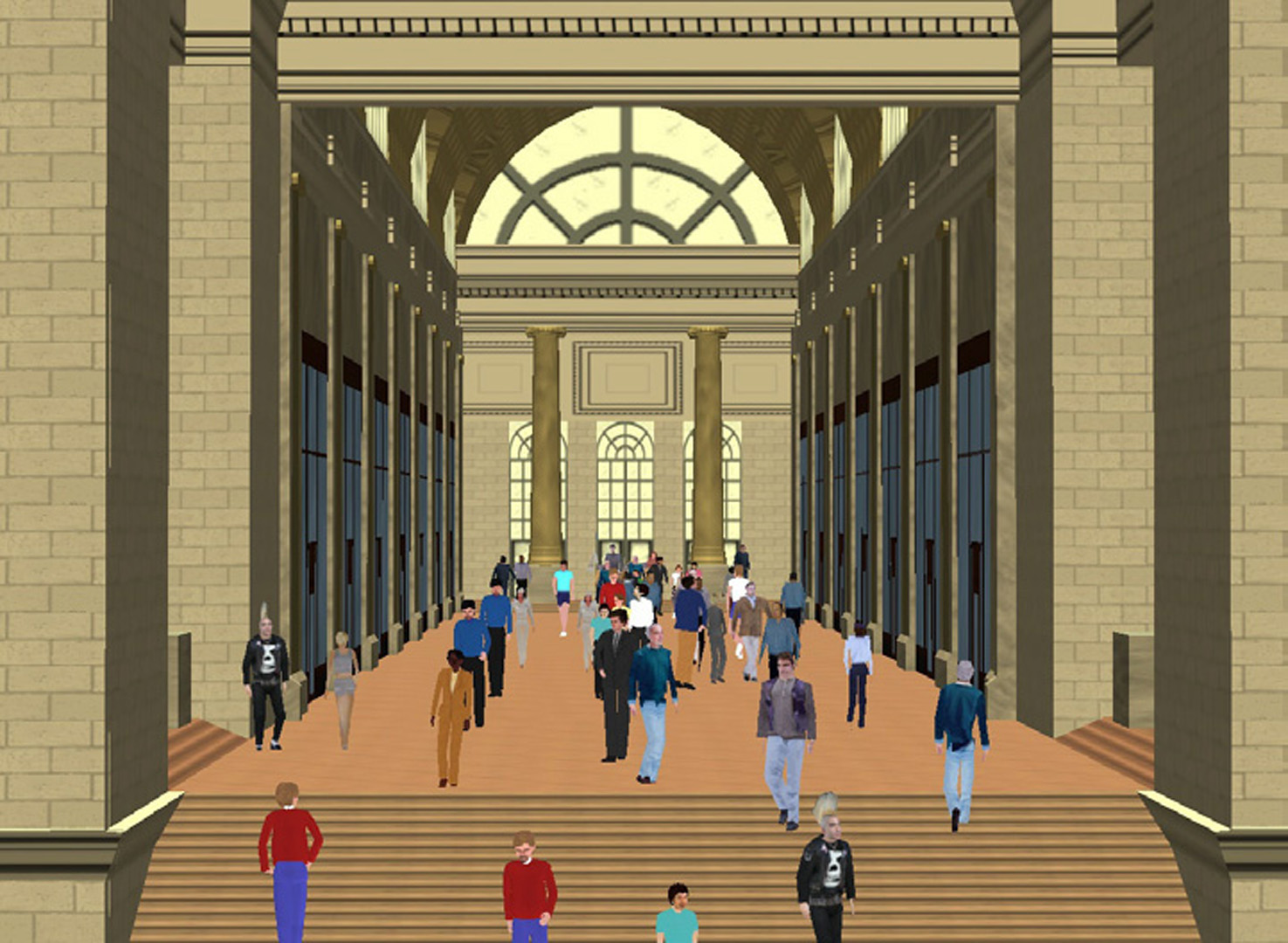“Animating Autonomous Pedestrians” by Shao and Terzopoulos
Conference:
Type(s):
Title:
- Animating Autonomous Pedestrians
Session/Category Title: Autonomous Characters
Presenter(s)/Author(s):
Abstract:
Our research addresses the challenge of animating pedestrians in urban environments through an artificial life approach, which integrates motor, perceptual, behavioral, and cognitive components. Our contribution goes well beyond so-called “crowd animation” to develop a comprehensive model of individual pedestrians that includes innovations in each of these components, and in their com- bination, yielding results of unprecedented fidelity and complexity for fully autonomous multi-human animation in large-scale virtual environments, such as a virtual train station (Fig. 1).
References:
Funge, J., Tu, X., and Terzopoulos, D. 1999. Cognitive modeling: Knowledge, reasoning and planning for intelligent characters. In Proc. SIGGRAPH 99, 29–38.
Koechling, J., Crane, A., and Raibert, M. 1998. Applications of realistic human entities using DI-Guy. In Proc. of Spring Simulation Interoperability Workshop, Orlando, FL.
Shao, W., and Terzopoulos, D. 2005. Environmental modeling for autonomous virtual pedestrians. SAE Symp. on Digital Human Modeling for Design and Engineering, in press.
Tu, X., and Terzopoulos, D. 1994. Artificial fishes: Physics, locomotion, perception, behavior. In Proc. SIGGRAPH 94, 43–50.










